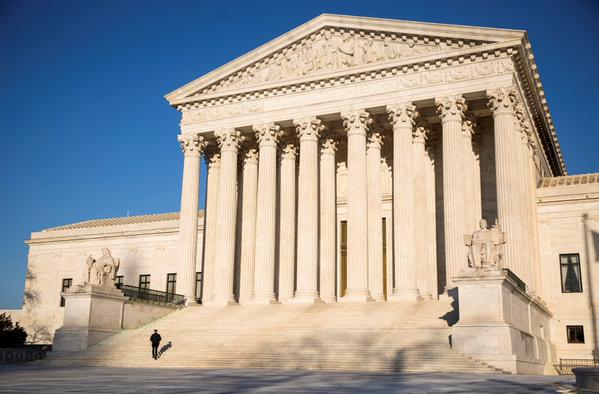We can only hope that the panicky pro-abortion reactions to the oral arguments heard by the Supreme Court on the Texas Heartbeat Law are accurate. To take just one of umpteen opinion pieces, the Los Angeles Times’ David Savage offered this assessment: “The Supreme Court is ending the year starkly split on abortion, with the five conservatives showing all signs they will overturn Roe vs. Wade and let state lawmakers decide whether women may legally end a pregnancy.”
Why should the Supreme Court overturn Roe? While there are a dozen different reasons, let’s focus on five.
First and foremost, Roe is indefensible. As Profs. Carter Snead and Richard Garnett wrote :
“Until Roe, no serious legal authority had suggested that the 14th Amendment created a right to abortion. Neither the framers of the amendment, the states that ratified it, nor any member of the American public at that time with knowledge of its contents could have thought that the amendment precluded states from protecting unborn children or otherwise legally proscribing abortion. To the contrary, when it was ratified in 1868, 30 of 37 states prohibited abortion in their criminal laws. Just four months after voting to ratify the amendment, the Ohio legislature passed a law criminalizing abortion from the moment of conception. No one suggested at the time that the 14th Amendment nullified, modified, or had any bearing on this law.”
In their amicus brief, they added, “By the narrowest of margins, this court in Planned Parenthood v. Casey refused to overrule Roe — not because it thought Roe was correct, but because it thought Roe must endure as a matter of stare decisis. But 30 years later it has become clear that Casey, too, was egregiously wrong, for each one of the stare decisis factors cited by Casey itself supports Roe’s repudiation.”
Click Like if you are pro-life to like the LifeNews Facebook page!
Second, as Savage suggests, the reversal of Roe means each state is free to determine their own abortion laws. As Mississippi Attorney General Lynn Fitch wrote in her response brief ahead of the oral arguments, “On Dec. 1, we will make the case to the Supreme Court for overturning Roe v. Wade and returning decision-making about abortion policy to the people. We recognize the magnitude of what we are asking. But the reason it represents such a monumental change is because almost 49 years ago the court put political intuition above sound legal reasoning and reached a conclusion in Roe utterly unsupported by the Constitution or the court’s own jurisprudence. It is time to correct that mistake.”
Third, Roe v. Wade is outdated…on numerous grounds that were absolutely essential to Blackmun reaching his decision. For example, in a profile of AG Fitch, Nicole Ault observed, “Here’s a measure of how far American women have progressed since 1973, when the U.S. Supreme Court decided Roe v. Wade: Then, no woman had ever been elected attorney general of a U.S. state, and none would be for another dozen years. Now, Mississippi’s attorney general is defending the constitutionality of her state’s law banning most abortions after 15 weeks.”
240 female scholars, professionals, and pro-life feminist groups made this point with vigor and clarity: “Ironically, under the guise of women’s rights, equality arguments for abortion suggest that females are intrinsically blighted by their reproductive capacity to bear children. These arguments tend, unwittingly perhaps, to promote the male childless norm in educational and employment settings.”
Fourth, courtesy of a million ultrasounds and countless ads, the largely invisible unborn child is now front and center in our moral imaginations. John Stonestreet with G. Shane Morris describe in this delightful way. [It]:
Pro-life activist and mom Ashley McGuire tells The Atlantic that her fellow millennials grew up in “an entirely different world of science and technology than the Roe generation.” In 1973, it seemed plausible that the unborn, especially during early development, were nothing more than “blobs of tissue.” In 2018, seeing babies on ultrasound and celebrating them as babies has become a matter of course for parents.
Courtesy of science, images and even videos of children curled up, thumbs in their mouths, have been imprinted on our cultural consciousness. And no one who seriously reckons with these images or is not willfully blind can call what they depict as mere “blobs of tissue.”
As The Atlantic’s Emma Green put it, “These advances fundamentally shift the moral intuition around abortion.”
Fifth and finally, Roe pitted mothers against their unborn children. This is untenable, unworkable, and utterly undesirable. Contrary to Roe’s defenders, AG Fitch explained:
There are those who would like to believe that Roe v. Wade settled the issue of abortion once and for all. But all it did was establish a special-rules regime for abortion jurisprudence that has left these cases out of step with other Court decisions and neutral principles of law applied by the Court. As a result, state legislatures, and the people they represent, have lacked clarity in passing laws to protect legitimate public interests, and artificial guideposts have stunted important public debate on how we, as a society, care for the dignity of women and their children.
She put all the reasons Roe must fall in just two sentences:
Roe broke from prior [Supreme Court] cases, Casey failed to rehabilitate it, and both recognize a right that has no basis in the Constitution.
Roe and Casey have proven hopelessly unworkable.
LifeNews.com Note: Dave Andrusko is the editor of National Right to Life News and an author and editor of several books on abortion topics. This post originally appeared in at National Right to Life News Today —- an online column on pro-life issues.








